Is there any link between PM2.5 pollution and depression?
Every year, one in every four people suffers from mental health issues. According to studies, poor air quality is linked to mental health issues.
🙄 In this article, you’ll find out some facts from the study about:
- The risk of mental disorders due to air pollution starts in early childhood
- Exposure to PM2.5 can make anyone experience depressive symptoms
- According to one study, every 10 µg/m3 increase in PM2.5 concentration was associated with a 9% increase in depressive symptoms
In Indonesia, depression is extremely common among young adults. The prevalence of depression in Indonesia is estimated to be around 3.7% of the total population, but it could be higher. Moreover, some studies suggested a plausible link between air pollution exposure and mental health problems. Now, let's break this down together!
What depression really is
Depression is more than just a bad mood, and it's not something you can "snap out of." Depression is a mood disorder characterized by a persistent sense of sadness and loss of interest. It affects how you feel, think, and behave and can lead to a variety of emotional and physical problems. Depression may necessitate long-term care.
Early exposure to air pollution can affect the development of mental disorders later in life
Worldwide, 10-20% of children and adolescents have mental health problems. According to research, the majority of adult psychopathologies begin in childhood and adolescence, with those whose problems start early and persist having the worst prognosis. Due to their still-developing brains, children may be extremely prone to neurologic damage from air pollution. They are more likely to have less established natural barriers in the lungs to protect against inhaled particles, resulting in a higher breathing rate to body size ratio. This exposure to air pollution can influence the development of disorders later in life.
PM2.5 exposure was associated with an increase in depressive symptoms
The persistent sadness or loss of interest that characterizes major depression can result in a variety of behavioral and physical symptoms. According to a study conducted in London, with an estimated annual mean concentration for PM2.5 of 15.09 μg/m3, air pollution was associated with higher symptoms and a higher likelihood of a diagnosis of depression and behavioral disorders at age 18. According to the study, those exposed to pollution at levels greater than 15.09 μg/m3 had 3-4 times greater odds of developing depression by age 18 than those exposed to the least amount of pollution.
📚 An intriguing study from China attempted to investigate the relationship between depressive symptoms and PM2.5 exposure through open windows. As a result, they discovered a 9% increase in depressive symptoms for every 10 µg/m3 increase in PM2.5 concentration. This increased risk was taken from an experiment conducted over 180 days.
So, what are the levels of PM2.5 pollution concentration and the risk of increased depression symptoms? Take a look at the following graph!

On average, PM2.5 pollution is high over the last 6 months. In fact, the most polluted region of PM2.5 concentration in Indonesia — South Tangerang — has a risk of increased depressive disorder symptoms of up to 45%!
🤔 Let's explore the data for each city in more detail!
DKI Jakarta
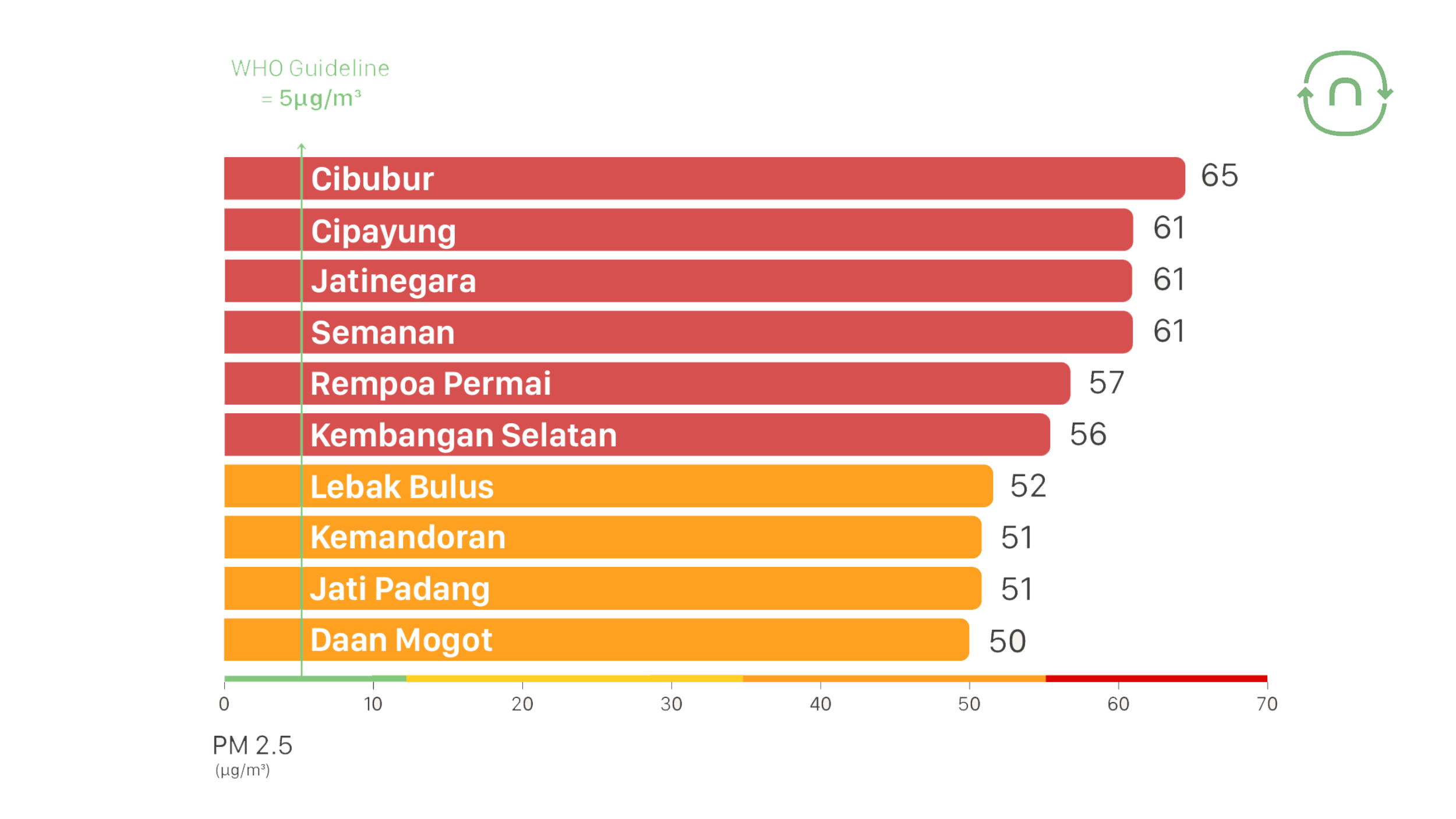
Cibubur in DKI Jakarta has had the highest PM2.5 concentration over the past six months, at 65 μg/m3, 13x the WHO-recommended limit.
Bekasi
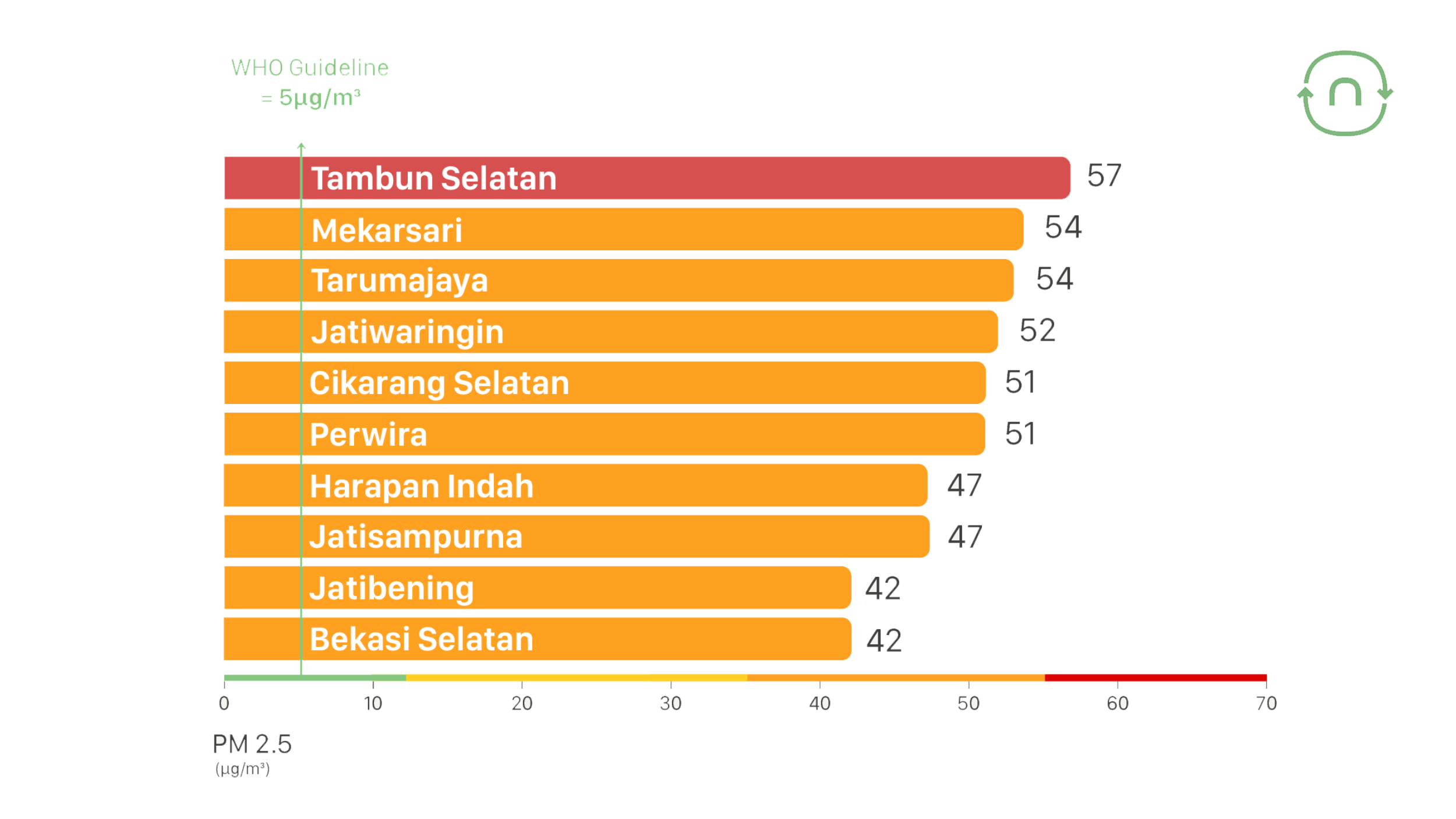
Furthermore, we can see that the location with the highest PM2.5 concentration in Bekasi in the last 6 months is Tambun Selatan, with a PM2.5 concentration of 57 μg/m3 or 11.4x above the WHO-recommended limit.
South Tangerang and Tangerang
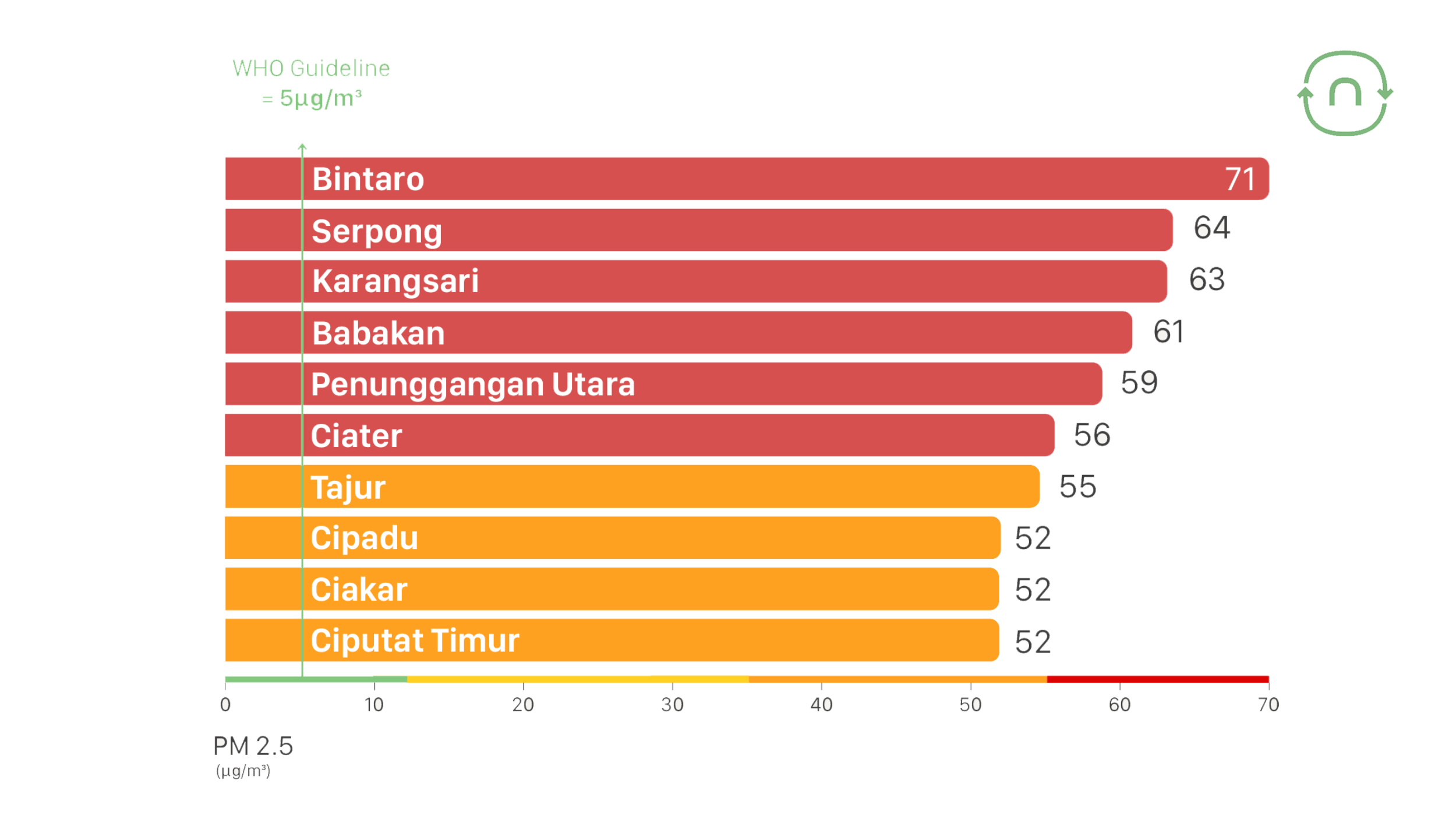
As the city with the worst air quality for the past 6 months according to Nafas data, we can see that the location with the highest PM2.5 concentration in Tangerang and South Tangerang is Bintaro. The PM2.5 concentration in Bintaro reached 71 μg/m3 or 14.2x above the WHO-recommended limit.
Surabaya
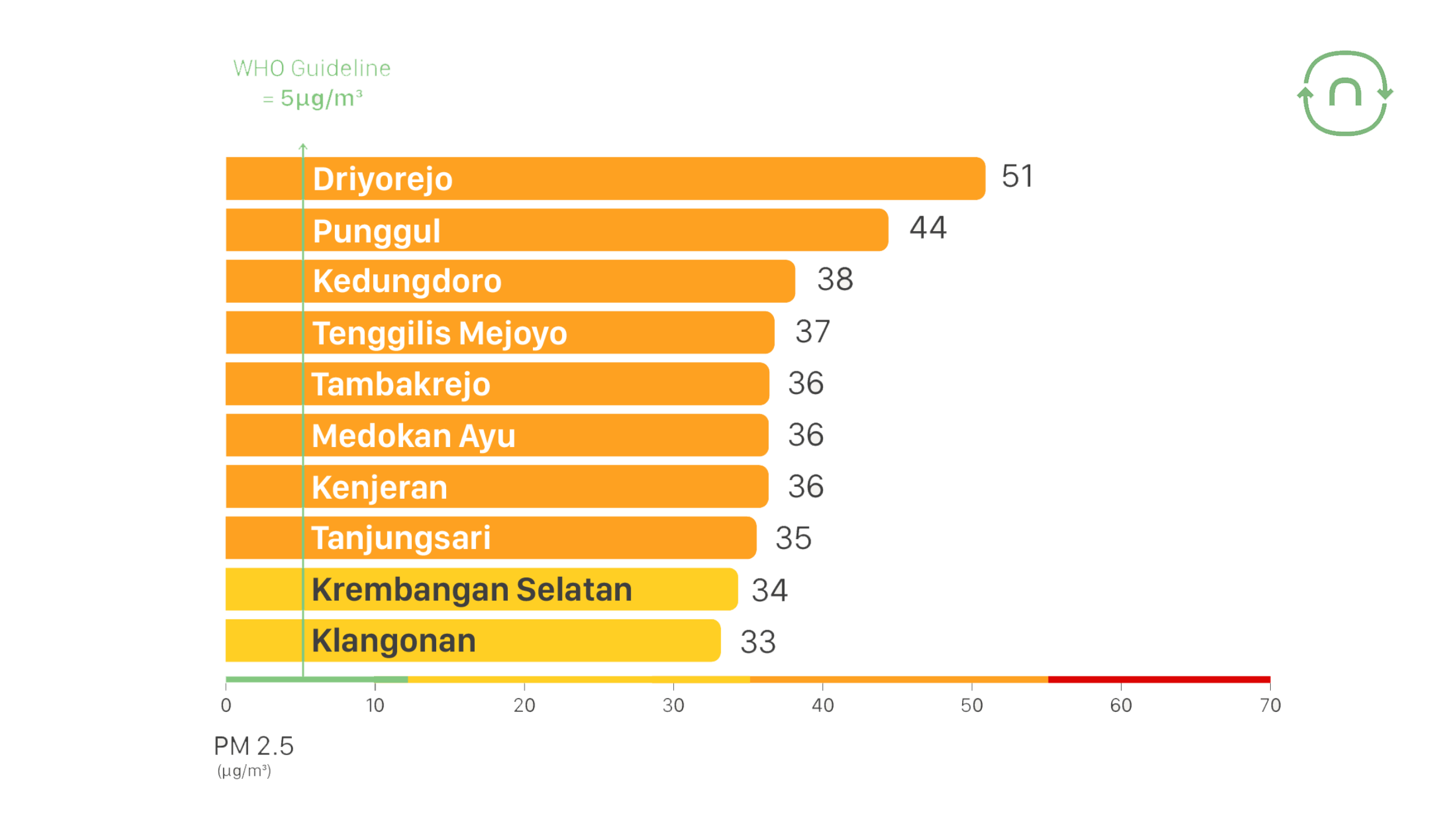
Last but not least, Driyorejo is the Surabaya location with the worst air quality, with PM2.5 concentrations reaching 51 μg/m3, or 10.2x the WHO recommended limit.
Indonesia's air quality is not okay
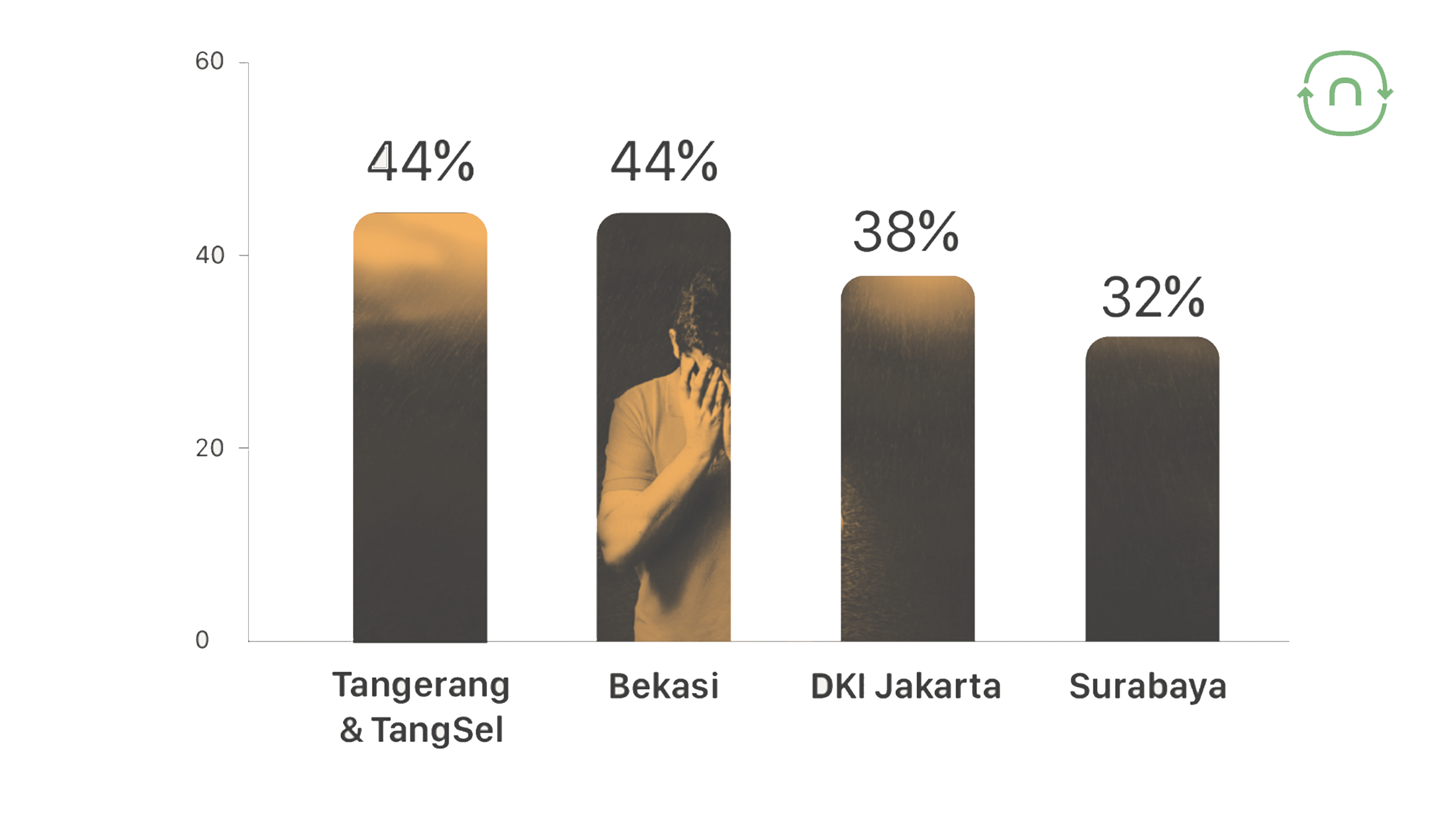
Based on the air quality in the four cities, as well as Nafas analysis and the aforementioned studies, the following areas could be at risk of a 44% increase in depressive symptoms on average. This is deeply concerning, given that clean air is essential to preserve our well-being, both mentally and physically.
Actions you can take to minimize exposure to air pollution
We offer some simple and effective tips for protecting yourself and your family from the threat of air pollution:
- Monitor the air quality first and stay informed before going outside. You can use the nafas app to keep updated with the quality around your home. Then, you can easily determine the protective measures you can take during your activities.
- Stay indoors. You should stop all outdoor activities when the air quality is bad outside. This includes running and recreating. If you can smell smoke, you shouldn’t be exerting yourself outside.
- Close your windows. Use fans to circulate the air in your home, and use filters to remove particles if possible.
- Use an N95 mask when doing outdoor activities. To protect yourself from polluted air, wear an N95 mask that filters out fine particles. Cloth masks typically allow fine particles to pass through.
- Use an air purifier. It's a good idea to use an air purifier with HEPA filters, as the quality of the air outside affects the quality of the air inside your home. It can help remove particulates from the air.
🌬️ Want to stay informed about the air quality in your home location? Download the Nafas app and maximize its exciting features!
References:
Roberts, S., Arseneault, L., Barratt, B., Beevers, S., Danese, A., Odgers, C. L., Moffitt, T. E., Reuben, A., Kelly, F. J., & Fisher, H. L. (2019). Exploration of NO2 and PM2.5 air pollution and mental health problems using high-resolution data in London-based children from a UK longitudinal cohort study. Psychiatry Research, 272, 8–17. https://doi.org/10.1016/j.psychres.2018.12.050
Xue, T., Guan, T., Zheng, Y., Geng, G., Zhang, Q., Yao, Y., & Zhu, T. (2021). Long-term PM2.5 exposure and depressive symptoms in China: A quasi-experimental study. The Lancet Regional Health - Western Pacific, 6, 100079. https://doi.org/10.1016/j.lanwpc.2020.100079.
Yao, Y., Lu, T., Liu, Y., Qin, Q., Jiang, J., & Xiang, H. (2022). Association of depressive symptoms with ambient PM2.5 in middle-aged and elderly Chinese adults: A cross-sectional study from the China health and Retirement Longitudinal Study wave 4. Environmental Research, 203, 111889. https://doi.org/10.1016/j.envres.2021.111889